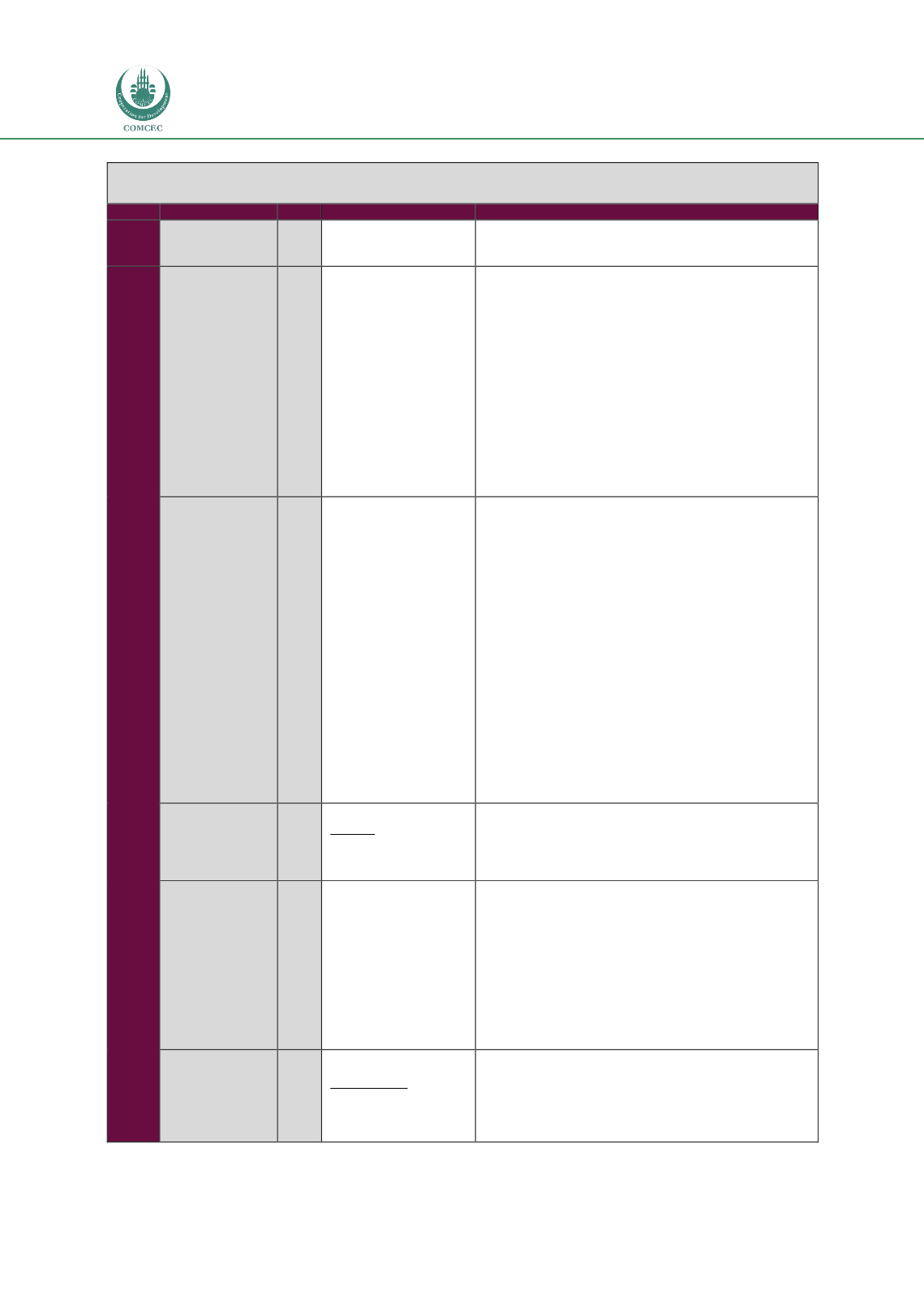

Improving Institutional Capacity:
Strengthening Farmer Organizations in the OIC Member Countries
104
3. Has the Government announced any recent policy initiatives explicitly designed to
encourage farmer organizations?
Group
Country
Y/N
Source
Comments
Bank's Horticulture and Livestock Project, The Perennial
Horticultural Development Project, The Horticulture
Development Project.
Asian Countries (cont’d)
Bangladesh
Farmers’ Organizations
in Bangladesh:
A Mapping and Capacity
Assessment:
Bangladesh Integrated
Agricultural
Productivity Project
Technical Assistance
Component 2014
Yes. Starting from 1999, there have been a variety of
policies that emphasize FOs (or groups, as they are
commonly referred to in the policies). Although not explicity
designed to encourage FOs, these policies have a huge
impact on how FOs function in Bangladesh. According to
FAO, there are about 10 policies that impact directly on FOs
in Bangladesh. They include: two (2) broad policies -- the
National Agricultural Policy (NA P) (1999) and the Rural
Development Policy (2001); one (1) specific cooperative law
drafted in 2011 but not yet approved; three (3) policy tools
focusing on agricultural extension as agents are expected to
work with and through FOs; and several, more specific sub-
sector policies across fisheries, livestock, and water
management that also impact the way the government
works with FOs.
Guyana
A National Strategy for
Development of
Agriculture in Guyana
Yes, though no real direct ones. The National Development
Strategy is a 1996 sectoral policy aimed at transforming the
agricultural sector by increasing productivity, output,
production and competitiveness. It aims to achieve this
through: (i) Providing adequate support services and
infrastructure to facilitate development of the sector; (ii)
Reducing restrictions on market operations to allow for free
mobility of resources and increasing domestic market
access; (iii) Providing producers with greater control over
productive resources; (iv) Designing and implementing
systems for information generation as they relate to market
intelligence and research and development; (v) Increasing
linkages for information flows to all stakeholders in the
sector to inform investment, production and marketing
decisions; (vi) Increasing the relevance of agricultural
training and education; (vii) Targeting investments to
upgrade infrastructure in the areas of drainage, irrigation,
roads and other support systems; and (viii) Developing
maintenance models and mechanisms for productive
infrastructure, in particular drainage and irrigation.
Kazakhstan
LiportalYes. In 2002, the Agriculture and Food Program (AFP) was
announced. The AFP provided general services support to
agriculture and is aimed at improving infrastructure and
product quality. Input subsidies (e.g. on fertilizers, fuel, and
seeds) and price support schemes aim to stimulate output.
Malaysia
Enhancing Co-Operative
Movement To Achieve
Malaysia’s Development
Goals
Yes. The Government of Malaysia introduced the 3rd
National Agricultural Policy (1998-2010). This policy is an
improvement from the 1st National Policy in 1984 and the
2nd National Policy in 1992. Under the 3rd National
Agricultural Policy Initiative, a new scheme was introduced
by
the
Farmers'
Organization
Authority
called
'Entrepreneur Farmer', aimed at creating more farmer
entrepreneurs. Under this scheme, enterprising farmers are
selected to venture into commercial farming enterprises.
The inclusion of the Agricultural Sector in the 9th Malaysia
Plan comes with the allocation of USD 3.02 billion.
Maldives
Rural PovertyYes, the Agriculture Development Master Plan (ADMP) of
2006-2020: The ADMP focuses on implementing policies
that: Improve food security, nutrition, incomes and
employment
opportunities;
Foster
gradual
commercialization of the agriculture sector through
increased production; Increase the capacity to generate

















